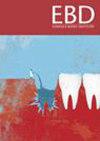Do patient and surgical factors predict postoperative discomfort in implant dentistry?
IF 2.3
Q3 Dentistry
引用次数: 0
Abstract
The study utilized records from the Department of Oral Implantology at Wuhan University (May 2020 to April 2021). A total of 366 participants with missing teeth requiring implant-supported rehabilitation were included. Records detailed patient demographics, clinical procedures, and postoperative experiences. Data were collected through telephonic follow-ups and questionnaires assessing pain, anxiety, discomfort, and adverse events. Participants were selected based on the need for dental implant placement and/or bone augmentation. Inclusion criteria included being over 18 years old, possessing basic communication skills, and providing consent. Patients with systemic diseases, acute oral infections, or contraindications to implant therapy were excluded. Secondary-stage surgeries and sites with prior augmentation or implant failure were also excluded. Variables such as age, gender, alcohol consumption, smoking status, periodontal status, surgical procedures, and postoperative complications were collected. Perception of pain, anxiety, and discomfort was measured using a numerical rating scale (NRS). Logistic regression identified predictors of discomfort severity and duration. Most participants reported mild or no pain (78.7%) and anxiety (89.7%) during surgery. Discomfort decreased significantly over time, with 57.7% reporting discomfort on day 1, 36.1% on day 3, and 0% by day 14. Alcohol consumption, pain perception during surgery, age, and bone augmentation procedures were key predictors of discomfort. Tailored care is recommended to enhance outcomes.患者和手术因素能预测种植牙术后不适吗?
数据来源:研究利用武汉大学口腔种植科(2020年5月- 2021年4月)的记录。总共包括366名缺牙需要种植体支持康复的参与者。详细记录患者人口统计、临床程序和术后经验。通过电话随访和评估疼痛、焦虑、不适和不良事件的问卷调查收集数据。研究选择:参与者根据种植牙和/或骨增强的需要进行选择。入选标准包括年满18岁,具备基本的沟通技巧,并表示同意。排除有全身性疾病、急性口腔感染或种植治疗禁忌症的患者。二期手术和先前隆胸或植入失败的部位也被排除在外。数据提取和综合:收集年龄、性别、饮酒、吸烟状况、牙周状况、手术方式和术后并发症等变量。疼痛、焦虑和不适的感觉采用数值评定量表(NRS)进行测量。逻辑回归确定了不适严重程度和持续时间的预测因子。结果:大多数参与者报告手术期间轻微或无疼痛(78.7%)和焦虑(89.7%)。随着时间的推移,不适程度显著下降,第1天有57.7%的人感到不适,第3天有36.1%,第14天为0%。结论:饮酒、手术过程中的痛觉、年龄和骨增强手术是不适感的关键预测因素。量身定制的护理建议,以提高结果。
本文章由计算机程序翻译,如有差异,请以英文原文为准。
求助全文
约1分钟内获得全文
求助全文
来源期刊

Evidence-based dentistry
Dentistry-Dentistry (all)
CiteScore
2.50
自引率
0.00%
发文量
77
期刊介绍:
Evidence-Based Dentistry delivers the best available evidence on the latest developments in oral health. We evaluate the evidence and provide guidance concerning the value of the author''s conclusions. We keep dentistry up to date with new approaches, exploring a wide range of the latest developments through an accessible expert commentary. Original papers and relevant publications are condensed into digestible summaries, drawing attention to the current methods and findings. We are a central resource for the most cutting edge and relevant issues concerning the evidence-based approach in dentistry today. Evidence-Based Dentistry is published by Springer Nature on behalf of the British Dental Association.
 求助内容:
求助内容: 应助结果提醒方式:
应助结果提醒方式:


